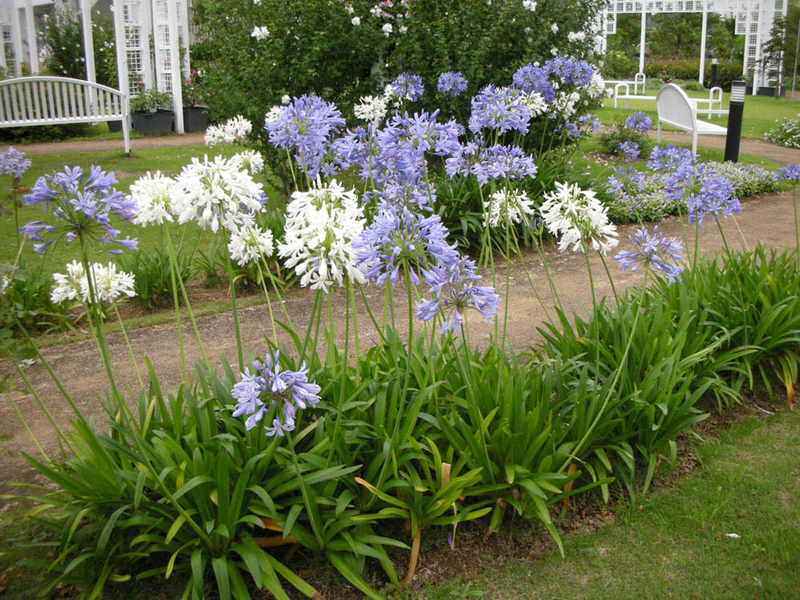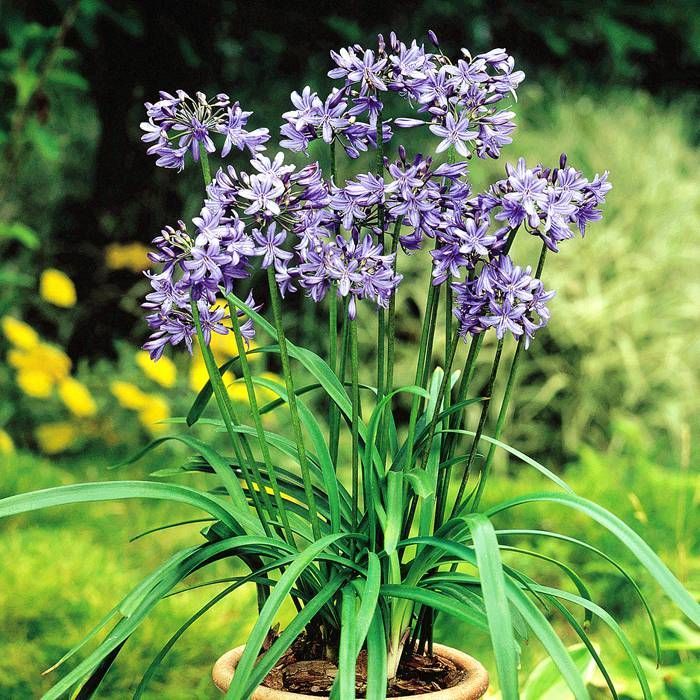Magnificent Agapanthus: Enhancing Your Yard's Elegance
Magnificent Agapanthus: Enhancing Your Yard's Elegance
Blog Article
Grasping the Art of Agapanthus Treatment: Important Actions for Healthy And Balanced Development and Lively Flowers
In the realm of cultivation, the cultivation of agapanthus stands as a fulfilling undertaking for those who seek to support these elegant blooming plants. With their striking blooms and stylish vegetation, agapanthus has captured the focus of gardeners worldwide. Nevertheless, attaining optimum growth and vibrant blooms needs a nuanced strategy that incorporates numerous vital steps. From selecting the right selection to mastering trimming strategies, the trip in the direction of growing prospering agapanthus plants is complex and holds the essential to unlocking the complete capacity of these botanical gems.

Choosing the Right Agapanthus Range

When choosing the right Agapanthus selection for your yard, take into consideration elements such as climate suitability, blossom color, and growth practice. Furthermore, take into consideration the environment in your region to make sure the Agapanthus variety you pick can flourish in your specific conditions. Comprehending the growth routine of different Agapanthus selections is critical for correct placement within your yard.
Suitable Planting Problems
Considering the ideal environmental requirements is crucial for successful Agapanthus farming. Agapanthus plants are delicate to chilly temperatures and ought to be safeguarded from frost during winter season months.
To make certain healthy and balanced growth and dynamic blooms, plant Agapanthus bulbs at a deepness of regarding 2-4 inches and space them 8-12 inches apart. Adding organic issue, such as garden compost, to the dirt can boost drain and fertility, advertising durable root development. Mulching around the base of the plants assists maintain wetness and subdues weed development. Routine watering is crucial, specifically throughout the growing period, to keep the soil consistently wet however not soaked.
Watering and Fertilizing Tips
Maintaining correct wetness levels and supplying crucial nutrients are essential aspects in the treatment regimen for Agapanthus plants. When it comes to watering Agapanthus, it is vital to strike an equilibrium. These plants like continually damp soil however are prone to root rot if overwatered.
Fertilizing Agapanthus is essential for advertising healthy and balanced growth and prolific flowers. Use a balanced fertilizer, such as a 10-10-10 formula, in the very early springtime as new development arises. By following these watering and feeding pointers, you can guarantee your Agapanthus plants prosper and generate lively, durable blooms.
Trimming Techniques for Agapanthus
Trimming Agapanthus plants at the proper times and with appropriate methods is crucial for keeping their health and promoting ideal development and blooming. The suitable time to prune Agapanthus remains in late winter or early springtime before brand-new development arises. Start by eliminating any kind of dead or yellowing fallen leaves near the base of the plant. Cut them as close to the ground as feasible without damaging the emerging shoots.
Deadheading invested blossoms can also redirect the plant's power into producing more blooms rather than establishing seeds. If you want to gather seeds for breeding, leave some blossoms to completely dry and fully grown on the plant.
Remember to utilize clean, sharp devices to make precise cuts and lower the risk of introducing illness. Agapanthus. Routine pruning will aid keep your Agapanthus looking healthy and balanced and cool while making sure a bountiful display screen of beautiful flowers
Taking Care Of Common Parasites and Diseases
After making sure appropriate pruning techniques for Agapanthus, it is important to deal with typical pests and conditions that can affect the health and vigor of these plants. Agapanthus plants are generally hardy however can still come down with particular problems. One typical insect that impacts Agapanthus is the Agapanthus gall midget. This small, orange fly lays its eggs in the vegetation, resulting in altered growth and blossom buds that fail to open up. To battle this insect, prune and damage any kind of afflicted plant components and think about utilizing insecticidal soap.
Another usual concern is find fungal fallen leave place, which offers as dark sores on the leaves. To avoid fungal conditions, ensure excellent air flow around the plants, stay clear of overhanging watering, and remove any contaminated fallen leaves immediately. Additionally, Agapanthus plants can experience origin rot if they are planted in inadequately draining dirt. To stop this, plant Agapanthus in well-draining soil and stay clear of overwatering. By being alert and taking prompt activity versus conditions and insects, you can aid your Agapanthus plants grow and create vivid blossoms.

Verdict
In final thought, mastering the art of agapanthus treatment includes selecting the right variety, supplying excellent planting problems, appropriate watering and feeding, ideal trimming techniques, and resolving usual parasites and conditions. By adhering to these necessary steps, you can make sure healthy and balanced growth and dynamic blossoms for your agapanthus plants. Remember to frequently keep track of and maintain your plants to advertise their total health and durability.
To ensure healthy go to website development and from this source vibrant blossoms, plant Agapanthus light bulbs at a depth of concerning 2-4 inches and room them 8-12 inches apart. By following these watering and fertilizing pointers, you can guarantee your Agapanthus plants flourish and produce lively, lasting blooms.
One common parasite that impacts Agapanthus is the Agapanthus gall midge. Additionally, Agapanthus plants can suffer from origin rot if they are planted in improperly draining pipes soil. By following these vital steps, you can make certain healthy development and vivid blossoms for your agapanthus plants.
Report this page